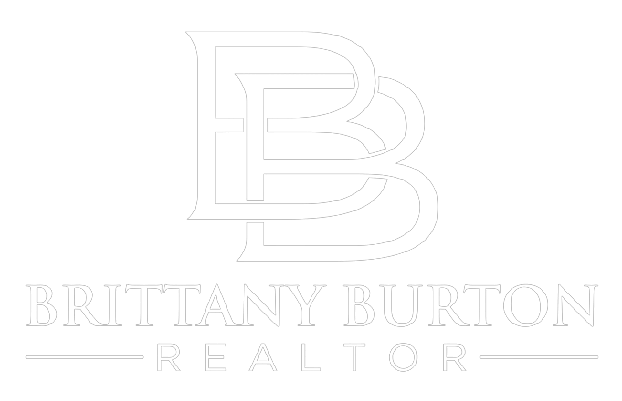After driving around a few neighborhoods and taking a close look at listing platforms like Zillow, Redfin, and the MLS (which you can access through a real estate agent), you should begin to understand whether you’re interested in what you’re looking for. The types of properties you want to buy—and ones that meet your financial goals—do actually exist. It is your job, not your real estate agent’s, to determine what you want and whether they are realistic.
Let’s say it again. It is your job – not your real estate agent’s – to determine what you want and whether they are realistic., You are the one who will be living there, and you are the one who will be paying the mortgage. Your agent can help guide you toward homes that fit the criteria you set, but your agent shouldn’t decide what you want.
In order for your agent to help you transact on the right home, you’ll need a crystal-clear definition of what type of purchase you’re looking to make. Plus, the more you know beforehand, the less likely you’ll be distracted by a feature in an otherwise unsuitable home. (As much as we love smart lights and phone-charging stations, they probably aren’t a top priority.)
Start your home search right
1. What is the maximum price you are willing to pay?
To help with this, take your price and run it through a mortgage calculator. This will give you an idea of the monthly payments you would be making on a home at that price. Make sure you include any additional fees, such as home insurance, property taxes and private mortgage insurance (PMI), when estimating your monthly costs.
Depending on your market, there may be some advantage to looking at homes slightly outside your stated price range. A seller may be willing to take an offer less than list price.
However, if you decide to look for lowball opportunities outside your price range, it’s important to keep your head on straight. You’ve already set a ceiling price—if they don’t accept an offer lower than that price, you’ll have to walk away.
2. How much house do you need?
Of course, you should know the number of bedrooms and bathrooms you’re looking for, and we strongly recommend that there be at least two toilets. (Besides the obvious disadvantages, a house with only one bathroom is old—yes, even if the rest of the house has been remodeled. Houses with two toilets sell faster and for more money than houses with only one. )
Also consider whether you need a home office, basement space or garage space, and how big a yard you want, and be sure you’re thinking five to seven years in the future. Keep this in mind if you’re planning on expanding your family or currently have young children. (Spoiler: They get so big!)
3. Where do you want to live?
Location, location, location—this is one thing you can’t change about your home. You probably know which city you want to live in, but are there other options nearby that might work? Compare resident amenities such as entertainment centers, city parks, and downtown amenities such as shopping and restaurants. There may be better cities for you than the one you’re associated with—or if there aren’t, that information will help you solidify your original choice.
Then, zoom in on the tiny details. One thing you can overlook is your personal commute time. Although the homes may be better on the other side of town, do you really want to spend hours commuting to and from work every day? When considering a home that will augment your current commute, we strongly urge you to drive your expected route during rush hour to see how bad it will be. If sitting in traffic and spending more money on gas sounds like a good time to you, then go for it! (If you work from home, the world is your oyster.)
While this may seem irrelevant if you don’t have children, buying a home in a good school district is always a plus. Homes in a good district sell faster and for more money than homes in a mediocre or worse district. Kids or not, you’ll still enjoy the benefits of the district when you go for sale. However, a good school district often comes with higher property taxes. Compare pricing to make sure the higher expense is worth it by looking at similar homes in both districts – at least online.
Last but not the least, some parts of the country have vast flood plains while others have small ones or none at all. If your property is located in a flood plain, you will need to purchase flood insurance, which can be quite expensive. Flood insurance is only available through the federal government, which unfortunately has no price purchase.
4. How much should the house be updated?
Are you looking for something a little more polished, or something you can compliment with? If the latter, you should know what projects you are willing to take on. Home renovation shows can be a great source of entertainment (let’s-do-that!), but projects on TV aren’t as simple as they seem. You can walk into an old house and think, well, I can tear down that wall to open up the kitchen. Add Value Immediately! Although the idea is tempting, you may come to regret that decision.
Make sure you consider your DIY skills before you dive into the show. What projects might you be willing to tackle to add value to the home? What is completely off the table? It depends entirely on your own abilities, or at least your willingness to learn whatever new skills are necessary to execute your plans.
You may be happy to update paint, landscaping, and appliances, but don’t be ready to commit to any major projects that involve a contractor (such as moving walls, repairing foundations, updating electrical service, etc.). doing up, fixing the roof, or any other high-ticket item). Maybe you’re replacing the floor just fine, but you don’t want to deal with the windows. Just make sure you know your limits so you can avoid the items they come across.
A basic understanding of big-ticket problems will help you a lot. Follow our DIY inspection checklist to know what to look for. For example, red flags such as mold, water stains, or cracks in the ceiling or walls may indicate a major leak. These signs of water damage can knock the house running immediately — and save you money on an inspector.
Important Note: We recommend that all home buyers hire a home inspector during closing. However, keeping a close eye on potential problems means you’ll notice problems early and make decisions before the offer stage.
5. Which attributes are absolutely essential?
A home should suit your lifestyle and preferences. Make a list of the things you cannot live without. Do you need a bigger kitchen? If you’re a big entertainer, you’ll want a sizable patio. Or are you a woodworker who needs significant garage space? What About the School District—Do You Care? If you don’t want to renovate, does the current floor plan and home design suit your tastes?
6. What Features Are Absolute Deal Breakers?
Likewise, make sure you write down anything you can’t live with, like a high-maintenance backyard or one near a busy road.
Knowing the answer to each of these questions will give you a clear idea of what you want. That way you can keep your eye on the prize when you start looking at properties in person.
You should be able to create three lists that you can send to your agent: the must-haves, the good-to-good stuff, and the deal-breakers. Sometimes your price range means you can have it all, and sometimes your price range means you have to make sacrifices. These lists can help tell your agent what’s important to you — and help keep you on track when you spot the shiny bells and whistles of an updated home.
Use this information to start your search
Now that you have a crystal-clear articulation of the perfect home — and based on recently sold homes, you know the perfect home is out in your price range — you need to ask your agent to pull your multiple listing service (MLS). Must say for And search by active properties in your price range. Before you start narrowing down your options, you might want to see how many are available in your price range alone.
If you’re looking at 157 homes to choose from, it can start to feel overwhelming—so it’s time to start adding your musts and nices to your criteria for narrowing down the options. The bedroom and bathroom are a great place to start. (Remember, having two bathrooms is more desirable than having one.)
Continue adding other items to your must-see list until you are viewing fewer than thirty properties, then ask your agent to send you these listings via email once per day when you are starting your search. set you up to achieve. Spend a few days getting a feel for what’s available and at what cost, and once you’re ready to make a real move, change the frequency of your notifications to alert you immediately when a home is listed .
Make a point of looking at your notifications at least every morning and note any qualities you’d like more information about. Not all MLS systems are the same, but your agent should be able to look up any address and see if the home has been listed in the past. Once you’ve gone through a preliminary list of properties and selected which homes you’d like to view, set up an appointment with your agent to view them.
While it can take weeks or even months to find a home, it takes an average of thirty to forty-five days to find a home. The fewer deal breakers you have on your list and the more cities you’re open to living in, the easier it will be to find a suitable home. Conversely, the more specific you are, the longer it will take.
There’s no right answer—you get to find what you like, and even better, you know what you want. You’ve set yourself up for success by avoiding any rushed deadlines, so it’s okay if finding your home takes a while.
Note by BiggerPockets: These are the views expressed by the author and do not necessarily represent the views of BigPockets.





